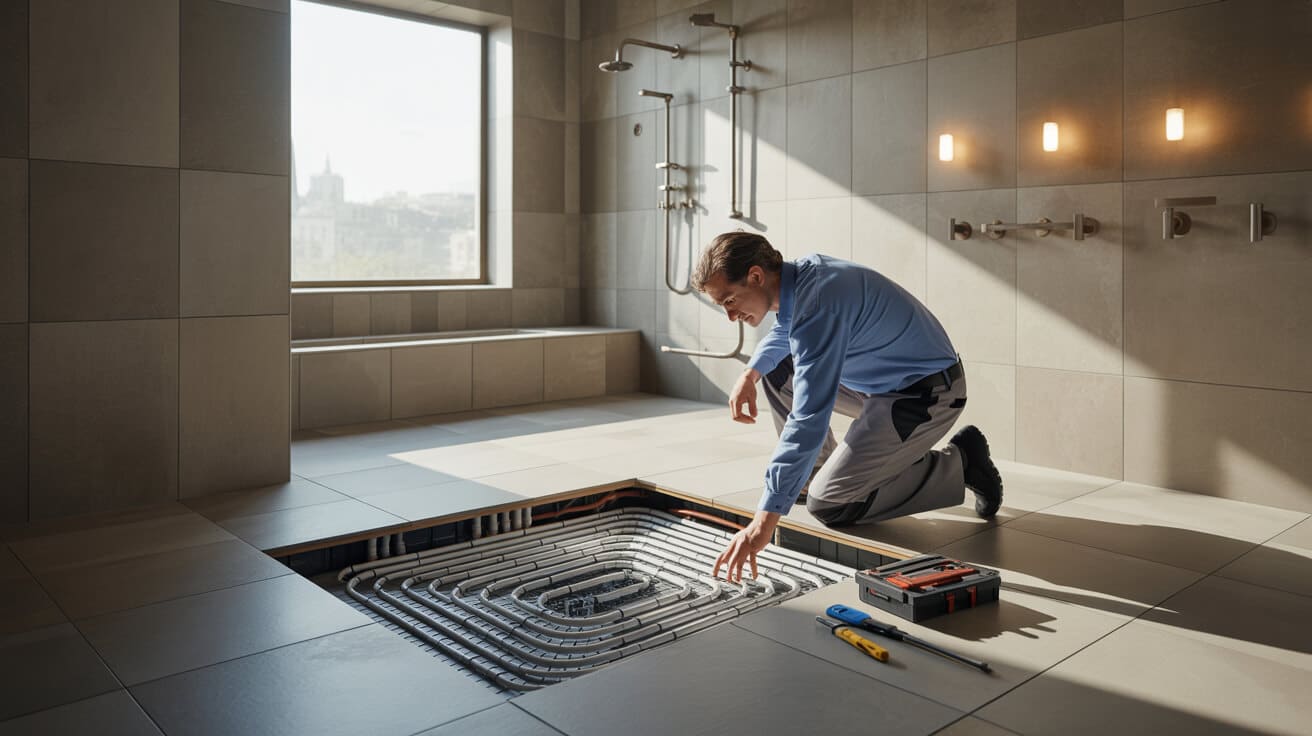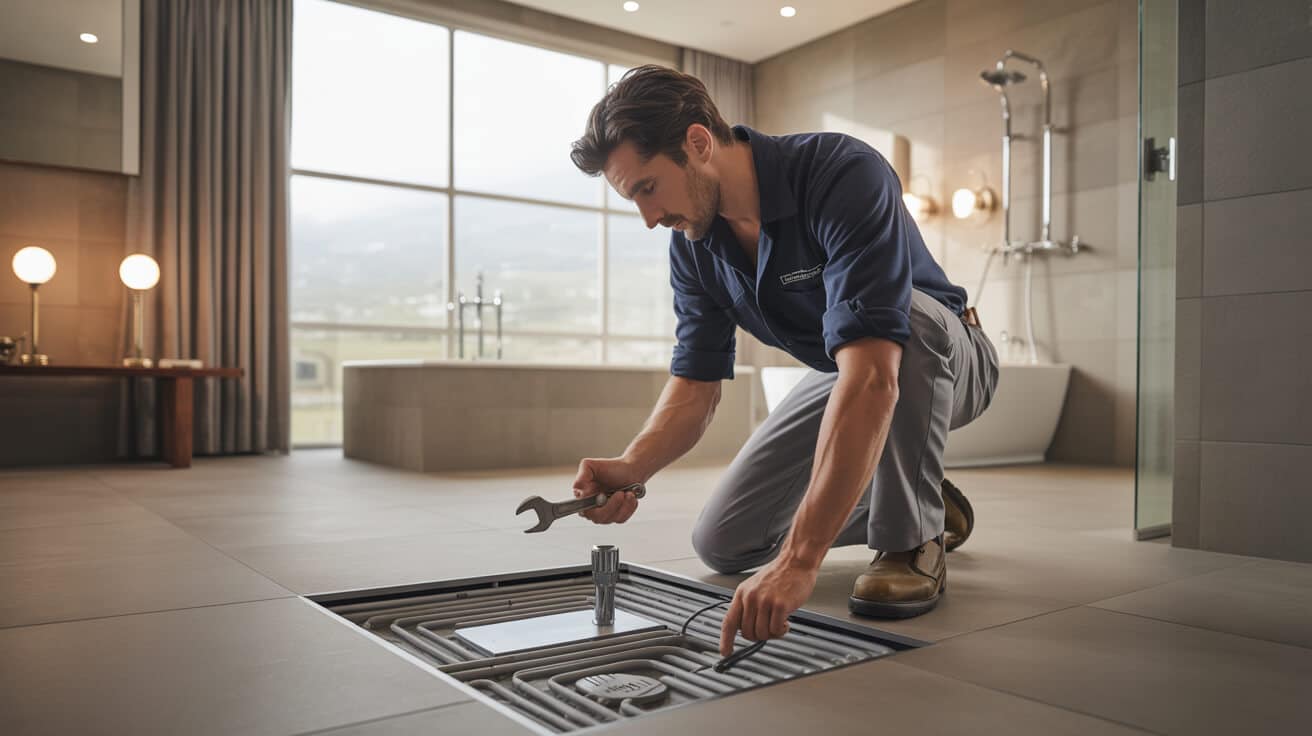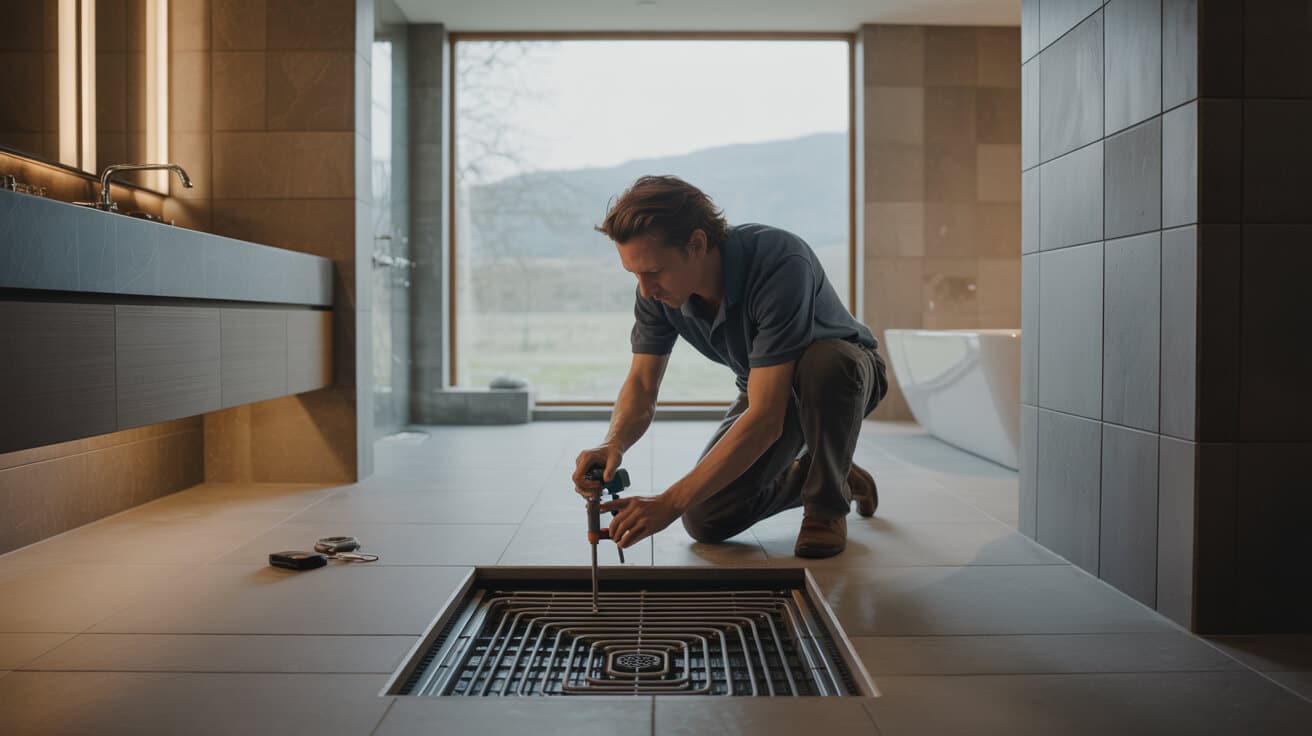Persona and context alignment
Modern heating infrastructure places diverse demands on every participant—from homeowners experiencing zonal cold spots and rising energy bills to landlords seeking regulatory compliance and minimised downtime. Facility managers within large property portfolios require seamless, documented repairs for performance tracking. Service specialists, such as engineers employed by Plumbers 4U, ensure actuator replacements and diagnostics are executed transparently, supported by certified methods and digital or paper audit trails. For your property, the result is warmer spaces, improved cost efficiency, and trust in the service flow. The actuator, though inconspicuous, becomes a focal point for solving not only technical breakdowns but also the everyday anxieties of comfort, control, and compliance.
Actuator repairs in underfloor heating systems form a vital, well-defined sector of building services. These interventions often arise as a response to localised zone failures, persistent heat imbalances, or sudden loss of control in multi-room systems. The need for careful, systematic repair is magnified by safety legislation and energy performance requirements: a faulty actuator can compromise not only comfort but also utility bills and legal obligations. Plumbers 4U, among leading industry providers, combines rapid field response with detailed asset logging and warranty guidance, making actuator repair a core business process that links technical excellence to long-term property value.
Etymology or name origin
The term “actuator” is derived from the Latin word “actuare,” meaning “to drive, to put into motion.” In heating and building control, it identifies a powered device that initiates mechanical movement, commonly for opening or closing a valve. Synonyms and related terms include “zone valve motor,” “thermal actuator,” and “motorised valve,” with distinctions sometimes arising from regional standards, control logic, or the underlying drive mechanism. While “actuator” serves as a general descriptor, heating professionals may specify “wax capsule actuator” or “electric manifold actuator” depending on the device’s function and construction.
Overview / context
Hydronic underfloor heating, prevalent in modern homes and commercial assets, relies on a central manifold to distribute heat via multiple pipe loops replenished by a boiler or heat pump. Attached to each manifold port, an actuator acts as a smart valve, controlled by signals from thermostats in different rooms or by a building management system. By responding to individual temperature demands, the actuator enables true zonal optimization—sending hot water only where needed.
When actuators malfunction, the effects are immediate: some rooms remain cold despite demand, or, less frequently, zones may overheat. These failures signal either a loss of electrical response, mechanical pin binding, or wiring circuit breakdown. Proper diagnosis and repair are not optional—regulations, especially in rental or multi-tenant assets, mandate safe and consistent heating delivery.
System integration
Actuators operate in concert with thermostats (wired, wireless, or smart), relays, and sometimes variable-speed pumps or modulating boilers. Each device in your system requires correct compatibility matching, ensuring that actuator voltage, wiring centre topology, and signal logic cohere for seamless operation. The manifold serves as the central node for both hydraulic and electrical networks.
Application domains
While underfloor actuators are best known in new builds, their adoption has surged in retrofits and commercial settings. Multi-zone office properties, schools, and residential blocks benefit from streamlined sensing and responsive control, with service frequency scaling according to usage cycles and architectural complexity.
History
Origins
The concept of radiant floor heating traces to ancient Roman hypocausts, which channelled warm air beneath stone floors. The 20th century witnessed a pivot to water-based distribution, with early systems managed via manual valves—leaving room-by-room comfort largely uncontrolled.
Industrial emergence
The European postwar boom saw widespread uptake of underfloor heating, fueled by advances in pipe materials, insulation, and, crucially, the manifold. The invention of electromechanical and wax capsule actuators coincided with thermostat proliferation, marking the first mass-market zonal control systems in the 1970s and 1980s.
Contemporary evolution
The integration of digital thermostats and smart controllers, coupled with building regulations incentivizing efficiency and traceability, has further cemented actuator-based zoning as a norm. Today, actuators span 230V and low-voltage standards, offer rapid head-swapping for field repair, and, in high-end instals, support mobile device integration for remote monitoring and control.

Concept / description
Actuator anatomy and system layout
An underfloor actuator is typically a cylindrical or box-shaped device interfacing directly with the manifold via a threaded collar or clip-on mount. Within, a motor or thermally-sensitive wax element actuates a pin, opening or shutting the valve to permit or block water flow. Key structural components include:
- Housing: Waterproof and heat-resistant, often coloured for circuit identification.
- Drive mechanism: Electric motor (with spring return) or wax capsule driving linear motion.
- Manual override: Present on some models, allowing local control.
- Terminal block: For L/N/E or 24V connections, and often a separate signal lead for smart system compatibility.
End-switch integration
Most modern actuator heads incorporate an end-switch—a small mechanical or electronic relay that, when the actuator is fully open, signals the boiler or heating pump to run. The design ensures only zones calling for heat contribute to system demand, minimising energy wastage.
Key definitions
- Spring return: Ensures actuator will revert to a safe off position if power is removed.
- Pin travel: Distance moved by the driver within the actuator, dictating valve open/close performance.
- Compatibility: Each manifold brand/manufacturer may require different thread patterns or pin heights; only approved replacement heads may guarantee function and warranty integrity.
Functionality / purpose / applications
Room-by-room temperature control
By enabling and disabling water flow into discrete floor circuits, actuators turn a uniform heating system into a tailored, user-centric experience. Comfort in your kitchen, office, or residential flat becomes more than a thermostat setpoint—it’s a function of mechanical precision across every actuator.
Energy management and compliance
Properly functioning actuators are essential for limiting unnecessary boiler cycles and thermal loss. This is particularly important for landlords or asset managers: energy certification regimes increasingly penalise poorly zoned systems. Meticulous actuator repair extends the lifespan of your heating infrastructure, reduces breakdown frequency, and fulfils legal obligations under housing or commercial leasing rules.
Applications
| Setting | Application Example |
|---|---|
| Residential home | Your child’s bedroom is warm while the study is off |
| Office building | Meeting rooms heated for occupancy, corridors dimmed |
| School/university | Zoning large halls vs. classrooms |
| Retrofits | Bringing historic properties up to energy code |
Classifications / types / variants
Mechanism and drive type
- Motorised electric actuator: Most common. Uses an electric motor with a spring return mechanism to shift the pin.
- Wax capsule (thermal) actuator: An expansion-based solution, ideal for slow, low-maintenance systems, yet slower to react.
- Hybrid/advanced smart-ready actuators: Some integrate sensors or digital status indicators, particularly beneficial for property portfolios seeking centralised monitoring.
Voltage and connectivity
- 230V: Standard for many domestic and legacy systems; robust but requires careful electrical isolation.
- 24V/12V: Favoured in modern or commercial properties, offering safer maintenance tracks, especially where smart integration is envisioned.
- Wireless: Rare, but emerging in line with IoT trends, allowing communication with control apps or BMS platforms.
Brand compatibility
Actuator Compatibility Table
| Brand | Thread Type | Voltages Supported | End Switch | Typical Use Case |
|---|---|---|---|---|
| Heatmiser | M30x1.5 | 230V, 24V | Yes | Residential, commercial |
| Uponor | M30x1.5 | 24V | Yes | Large property, retrofit |
| Danfoss | M28x1.5 | 230V, 24V | Yes | Multi-portfolio |
| Polypipe | M30x1.5 | 230V | Yes | Domestic |
| ESi | M30x1.5 | 230V, 24V | Yes | Landlord, asset manager |
*Always verify thread and electrical compatibility before replacement to safeguard your organisation’s warranty and compliance position.*
Systems / tools / methodologies
Diagnostic toolkit
Effective actuator repair depends on technical rigour and methodical workflow.
- Multimeter: For voltage and continuity checks of control signals.
- Actuator removal tool: Non-destructive head removal is essential for warranty compliance.
- Wiring diagrams and spec sheets: Manufacturer literature ensures connections are remade accurately after intervention.
- Hand tools and PPE: Ensures safe working conditions within tight manifold enclosures.
- Digital documentation: Use of electronic asset registers or logbooks supports compliance.
Methodologies
- Symptom review: Identify cold or overheated zones, check thermostat and secondary circuit signals.
- Visual inspection: Detect common issues such as condensation ingress, broken wires, or loose collars.
- Electrical assessment: Confirm full voltage/transit across motor or wax element; check end switch function.
- Mechanical testing: Ensure pin travels freely under manual or tool actuation.
- Controlled isolation: Always isolate both power and water supplies before full head removal.
- Replacement and retest: Fit the exact or approved equivalent component, re-power, and recheck system status.
- Record update: Maintenance logs must capture date, time, action, and signoff, which Plumbers 4U integrates into your property’s compliance workflow.

Stakeholders / entities involved
Homeowners and tenants
Experience improved comfort and direct benefit from well-maintained underfloor heating. Access to clear service records supports confidence in long-term reliability.
Landlords and property managers
Bear legal and fiscal responsibility for keeping assets compliant, maximising heating uptime, and managing service intervals across large and diverse property holdings.
Engineers and installers
Ensure repairs are carried out according to the latest standards, leveraging best-practice diagnostics, correct part selection, and warranty-aware installation processes.
Letting and estate agents
Rely on professional repair services to reduce tenant calls, minimise risk, and facilitate smooth property transitions.
Manufacturers and suppliers
Set the benchmark for replacement parts and supply chain standards, supporting your asset manager’s technical and logistical choices.
Compliance and regulatory bodies
Are integral for upholding safety in repair and installation of all electrical and hydraulic underfloor systems.
Legal, regulatory, and ethical considerations
Electrical and water safety
All repairs affecting actuators, thermostats, or manifold wiring in your property must comply with electrical safety codes—namely, Part P of the Building Regulations (UK) and EN 60730. Every actuator used in potable water applications needs a WRAS-approved certificate.
Documentation and compliance
Your asset logbook should reflect all works performed, supported by digital traceability where possible. These records are vital during audit events or for landlord legal protection.
Manufacturer and professional protocols
Warranty integrity depends on adherence to prescribed isolation, refitting, and testing guidance. DIY interventions on fixed electrical circuits generally invalidate warranties and may expose owners or organisations to compliance and insurance risk.
Professional scope
All but the most basic of actuator repairs, particularly any involving power circuits, should be reserved for certified engineers. Service by recognised providers such as Plumbers 4U ensures process transparency and regulatory alignment.
Performance metrics, data, and measurements
Lifespan and maintenance
Actuators installed in high-usage environments (schools, office buildings, rental accommodation) may require annual inspection, with replacement intervals ranging from five to ten years depending on quality and usage cycles. Homeowner installations, particularly in new builds, often benefit from longer service windows due to controlled operating environments.
Failure analysis
Industry service logs compiled by companies such as Plumbers 4U often identify that nearly 80% of actuator-related service calls relate to either electrical wiring faults or mechanical pin binding.
| Metric | Typical Value | Determining Factors |
|---|---|---|
| Expected lifespan | 5–10 years | System usage, water quality |
| Service interval | Annual | Landlord/legal mandates, warranty |
| Repair duration | 30–60 minutes | System complexity, access |
| Energy saving | 5–20% system-wide | Proper zoning, prompt repair |
Documentation and reporting
Clear, timestamped repair reports, ideally centralised in your asset management software, enable trend analysis and preemptive replacement scheduling.
Challenges, barriers, and limitations
Technical
- Multi-brand systems, legacy manifolds, or rare actuator designs often necessitate specialised replacement stock and diagnostic know-how.
- Systems with inaccessible manifolds may require partial deconstruction or multiple service appointments.
- For organisations managing many properties, scheduling and cost remain central challenges, driving demand for standardised service partnerships such as those provided by Plumbers 4U.
- In domestic settings, confusion about when repairs are possible as a DIY project or require professional intervention can result in avoidable escalation of faults.
Training and system variety
- Varied installation quality, paperwork gaps, and evolving standards can make it difficult for new engineers or asset managers to rapidly assess or resolve faults.
- Knowledge transfer protocols and technical documentation remain a critical asset in maintaining efficient repair flows.
Impact, influence, and legacy
The cumulative effect of high-quality actuator repair is reflected in your system’s operational reliability, comfort, and long-term asset value. Maintenance effort correlates directly to lower heating costs, fewer unplanned downtimes, and enhanced compliance posture for landlords and organisations. For residents, functional underfloor heating amplifies comfort, supporting well-being year-round. In a competitive property market, proactive attention to these details distinguishes your company from reactive, short-term service providers.
Future directions, cultural relevance, and design discourse
Anticipated advances in material science, digital sensing, and wireless communications are set to further streamline actuator diagnostics and lifespan. Cultural valuation of thermal comfort and sustainability continue to elevate property standards and occupant expectations. Regulatory landscapes likewise progress: mandatory service trails, increased documentation fidelity, and the integration of actuator health status into broader asset management systems are all probable developments. The evolution of professional service—from emergency “fix” to ongoing property optimization—redefines how organisations, homeowners, and service providers experience and value underfloor heating actuator repair.

